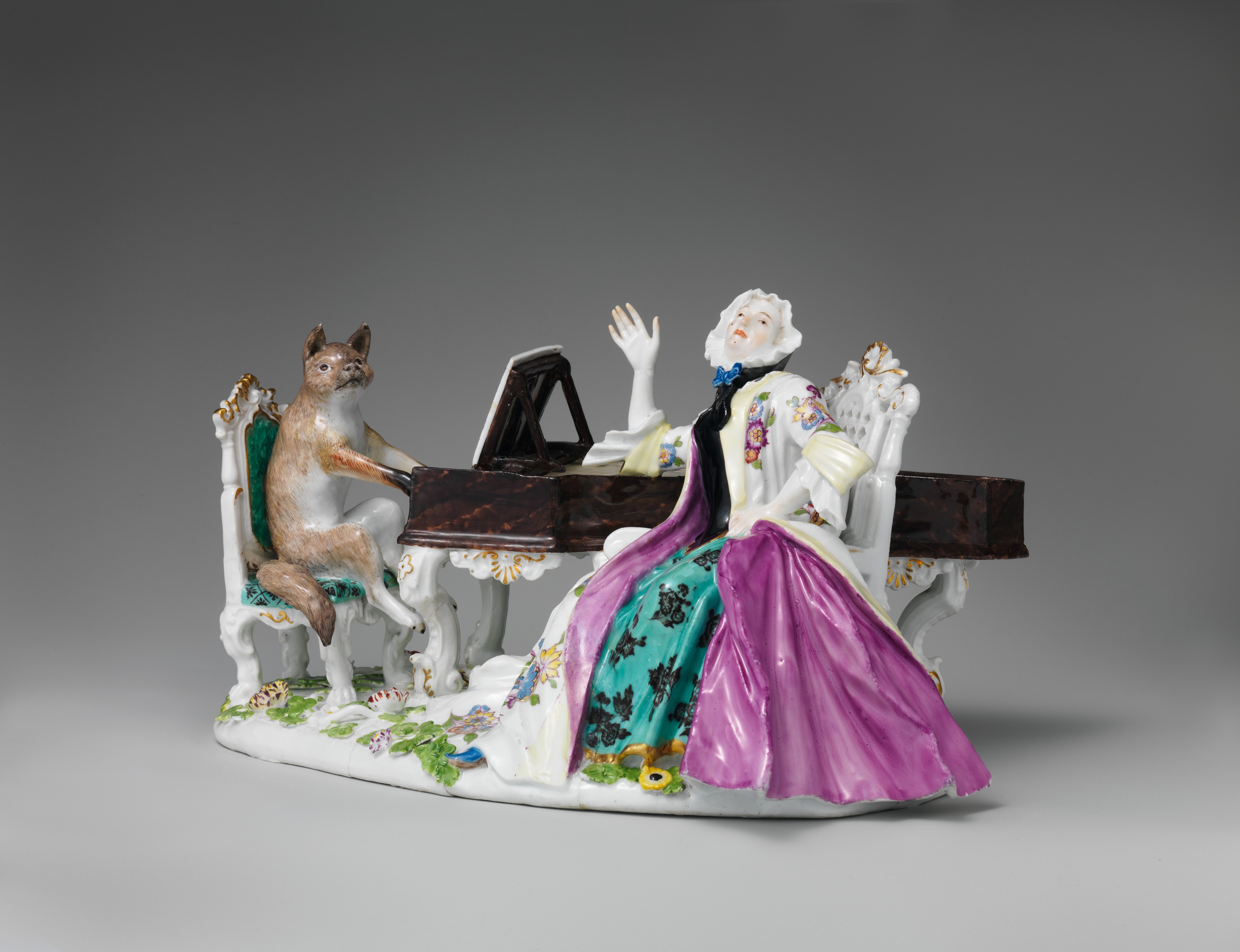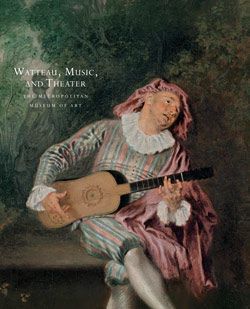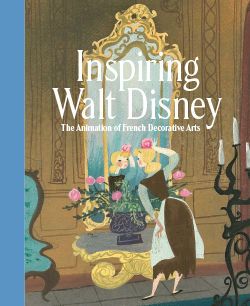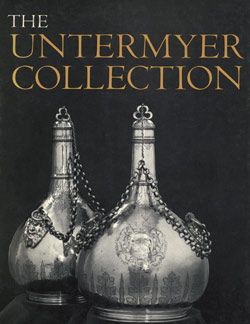Faustina Bordoni and Fox
Manufactory Meissen Manufactory German
Modeler Johann Joachim Kändler German
Not on view
This figure group expresses on several levels the great popularity of opera in Dresden in the mid-eghteenth centruy. The renowned Italian mezzosoprano Faustina Bordoni is depicted in the act of singing, accompanied by a fox on a harpsichord. The precise painting of the sheet music on the harpsichord provides the name of the opera, Antigono, followed by the names of its composer, Johann Adolph Hasse, and its lead singer, S. (Giovanni) Bindi. The music is rendered in extraordinary detail, allowing one to read the lyrics, which refer to seduction, dignity, and revenge.
In 1730, Bordoni had married Hasse, who was a conductor, a prolific composer, and an accomplished harpsichordist. In the course of his career, Hasse composed numerous operas for the Dresden court, and Faustina figured prominently in many of them. The couple's celebrated status in the musical life of Dresden did not protect them, however, from the satiric wit of the great Meissen modeler Johann Joachim Kändler. In this composition, Kändler's inclusion of the fox at the harpsichord is a thinly disguised reference to a certain Herr Fuchs (fox), with whom Faustina had a well-publicized love affair. It is notable that Kändler could assume that his intended audience for this porcelain group would understand the references to contemporary music and singers and would be familiar with the lives of Dresden's most famous musical couple.
This image cannot be enlarged, viewed at full screen, or downloaded.
This artwork is meant to be viewed from right to left. Scroll left to view more.








